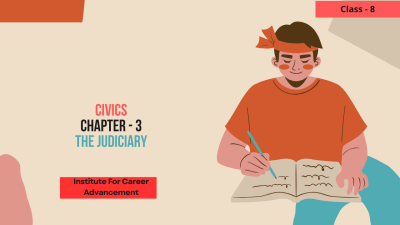Parliamentary Government - Class 8
A parliamentary government is a system of governance where the executive branch (the government) is accountable to the legislature (the parliament). In this type of system, the government derives its power and legitimacy from the parliament, which is elected by the people. Key features of a parliamentary government include: Fusion of Powers: The executive and legislative branches are not strictly separated, as members of the government are also members of the parliament. Collective Responsibility: The government is collectively responsible to the parliament, meaning that if the government loses the confidence of the parliament, it must resign. Party System: Parliamentary governments are typically based on a party system, where political parties compete for power and form governments. Prime Minister: The leader of the government, who is usually the head of the majority party in the parliament. India is a parliamentary democracy, with the Prime Minister as the head of government and the Parliament as the supreme legislative body. সংসদীয় সরকার হল এমন একটি শাসন ব্যবস্থা যেখানে কার্যনির্বাহী শাখা (সরকার) আইনসভার কাছে দায়বদ্ধ থাকে। (the parliament). এই ধরনের ব্যবস্থায়, সরকার সংসদ থেকে তার ক্ষমতা এবং বৈধতা অর্জন করে, যা জনগণের দ্বারা নির্বাচিত হয়। সংসদীয় সরকারের প্রধান বৈশিষ্ট্যগুলির মধ্যে রয়েছেঃ ক্ষমতার সংমিশ্রণঃ কার্যনির্বাহী ও আইন প্রণয়নকারী শাখাগুলি কঠোরভাবে পৃথক করা হয় না, কারণ সরকারের সদস্যরাও সংসদের সদস্য। সমষ্টিগত দায়িত্বঃ সরকার সম্মিলিতভাবে সংসদের কাছে দায়বদ্ধ, যার অর্থ সরকার যদি সংসদের আস্থা হারায় তবে তাকে অবশ্যই পদত্যাগ করতে হবে। দলীয় ব্যবস্থাঃ সংসদীয় সরকারগুলি সাধারণত একটি দলীয় ব্যবস্থার উপর ভিত্তি করে, যেখানে রাজনৈতিক দলগুলি ক্ষমতার জন্য প্রতিযোগিতা করে এবং সরকার গঠন করে। প্রধানমন্ত্রীঃ সরকারের নেতা, যিনি সাধারণত সংসদে সংখ্যাগরিষ্ঠ দলের প্রধান। ভারত একটি সংসদীয় গণতন্ত্র, যেখানে সরকারের প্রধান হলেন প্রধানমন্ত্রী এবং সর্বোচ্চ আইন প্রণয়নকারী সংস্থা হল সংসদ।
English
Last updated
Wed, 27-Nov-2024



















